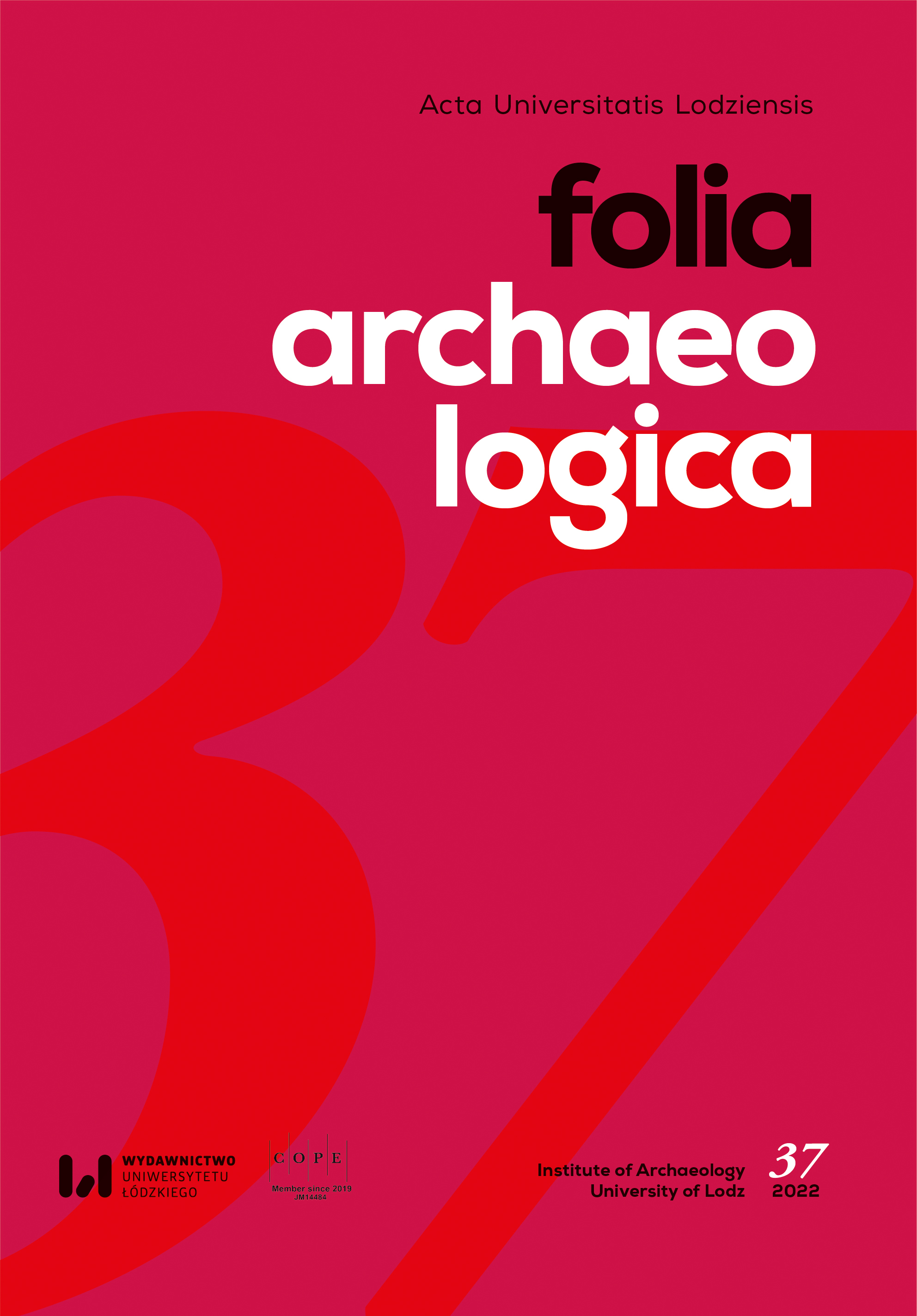Badania archeologiczne przy ul. Podgórnej 1 we Wronkach, pow. szamotulski, woj. wielkopolskie. Przyczynek do historii miasta
Archaeological Research at 1 Podgórna Street in Wronki, Szamotuły County, Greater Poland Province. A Contribution to the Town’s History
Author(s): Piotr Wawrzyniak, Paweł Banaszak, Marcin KrzepkowskiSubject(s): Archaeology
Published by: Wydawnictwo Uniwersytetu Łódzkiego
Keywords: Wronki; chartered town; communication route; residential plot; buildings; pottery; archaeological rescue research
Summary/Abstract: The location of the pre-chartered Wronki is unknown. Possibly the oldest Wronki settlement lay on the land of the village of Stare Miasto, 2 km southwest of the present town centre. Wronki was granted a town charter in the 3rd/4th quarters of the 13th century and first appeared in written sources as Civitas Vroncensis in a document from 1279 mentioning donations made by Przemysl II to the local Dominican monastery. The municipality had the status of a monarchical property, which it maintained until the beginning of the 16th century. Communication routes leading through the town made Wronki, already at the dawn of its history, an important transit hub for travellers from Greater Poland to Western Pomerania and towards New March. The control over the Warta River crossing with the customs house established here in 1298 provided the town with considerable income and guaranteed its prosperity. At the turn of the 14th and 15th centuries, Wronki gave way to the better-developing neighbouring Szamotuły and Sieraków. The following centuries brought stagnation and, finally, a crisis that reduced Wronki to the position of an insignificant town vegetating on the northwestern periphery of Greater Poland. It was not until Prussian times, around the middle of the 19th century, that the city started to flourish again. The plot at 1 Podgórna Street is located within a block of residential and commercial buildings on the northwest side of Wronki Old Town. The earliest history of the property is unknown. According to the town map by Voltz Lauer from 1822, the front of the property was occupied by a house with a passageway to the rear part, where another building stood. The excavation research, covering the front part of the plot, revealed a pattern of cultural layers dating from the late 14th century to recent times. No relics of buildings from the oldest phases were recorded. The excavation at a depth of 0.65–0.7 m showed the remains of a timber-frame building dating back to the 2nd half of the 17th century or early 18th century and an assemblage of over 900 fragments of modern-period ceramics, mainly brick-red. The mending of potsherds from this collection allowed the reconstruction of over 20 specimens of jugs, pots, mugs, flowerpots, bowls, lids, and a candlestick (an oil lamp?) with a suspension hole. This set of vessels was probably the kitchen equipment of the lady of the house. The archaeological research was of a rescue character, which prevented a thorough exploration of the whole area, since according to the ministerial guidelines, It is unacceptable […] to impose on investors the obligation to carry out archaeological research beyond the scope of the investment area if it has a strictly scientific rather than rescue purpose.
Journal: Acta Universitatis Lodziensis. Folia Archaeologica
- Issue Year: 2022
- Issue No: 37
- Page Range: 193-210
- Page Count: 18
- Language: Polish

